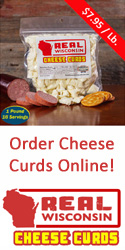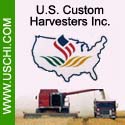 |
 |

|
|
|
Minnesota Ag News Headlines |
 |
Tips to Private Forest Owners Dealing with Storm Damage
Minnesota Ag Connection - 07/29/2016
The recent blowdown in northern Minnesota caused major damage to state lands, as well as private forest lands. While landowners are not required to clean up downed trees and debris, the Department of Natural Resources is encouraging private forest owners
and homeowners to consider salvaging and replacing damaged areas.
"Salvage and cleanup will likely be necessary to regenerate the forest and reduce the potential for wildfires and outbreak of insects and diseases," said John Carlson, DNR private forest management coordinator. "The first step is to assess the extent of the
damage and determine whether a timber sale is needed."
Working in storm-damaged areas is dangerous; so Carlson strongly recommends that only foresters, loggers or tree care companies do the work. Consider hiring a consulting forester to help assess, sell and replant damaged forests.
For smaller properties, the damage may simply require removal of trees with broken tops or limbs and severely bent or fallen trees. Consider retaining a few storm-damaged trees for wildlife habitat.
For large forest stands, a salvage harvest may be the best option. Salvage harvests remove trees that have been damaged. Healthy, undamaged trees with full crowns are retained.
There are several considerations when considering a salvage harvest on private land:
-- The DNR recommends people contract with a private consulting forester to estimate the timber value and advise on how to set up and conduct a timber sale. For a listing of private consultant foresters, visit web.paulbunyan.net/norfor/members.htm.
-- Contact adjacent landowners because salvage operations frequently require coordination with adjacent woodlands. The Minnesota Logger Education Program's online list of trained loggers is a resource to help find someone to remove damaged trees, visit
mlep.org/directorysearch.asp.
-- Landowners are strongly encouraged to have written contracts with anyone who provides consulting services or works on salvage or reforestation operations. Check references and make sure they have insurance for the type of work they're doing.
-- The volume and value of the salvageable timber will be almost impossible to determine until the harvesting operation begins. Value will depend on markets, access, amount and type of damage and size and quality of timber.
Timelines for wood deterioration, insect infestation and preventing insect spread to healthy trees depend on the tree species and environmental conditions.
Pine: The primary concern is pine bark beetles that can kill trees and introduce blue stain fungus. Damaged Jack, white and red pines provide ideal breeding grounds for pine bark beetles. During spring and early summer, all downed timber, large tree limbs and
cut products should be removed, burned, destroyed or debarked within three weeks of the storm to prevent the build-up of bark beetles.
Blue stain can reduce the value of sawtimber by two-thirds, but doesn't reduce pulpwood values. Blue stain will be a problem within two to three weeks of the storm for broken-off tree stems and tops, and within six weeks in damaged but living trees.
Aspen and red maple: Damaged aspen and maple start losing value the spring after the damage occurs.
Oaks: Quality red oak timber must be harvested by the October following the storm for maximum sawtimber value.
Many tree species come back naturally following a blow down or salvage harvest, including aspen, oak, basswood and maple. Returning a forest to Jack, white and red pine will require planting seedlings.
Contact a consulting forester or local DNR forester for more information. Reforestation options may be limited by salvage harvest methods and timing. Sites that do not successfully come back to trees naturally should be planted with seedlings.
Private forest landowners can purchase seedlings from the Minnesota State Forest Nursery for planting in the spring of 2017. Visit www.mndnr.gov/forestry/nursery for a list of available seedlings.
Other Minnesota Headlines
|
|
 |


|
 |
|
Copyright © 2024 - Farms.com. All Rights Reserved. |
 |
|